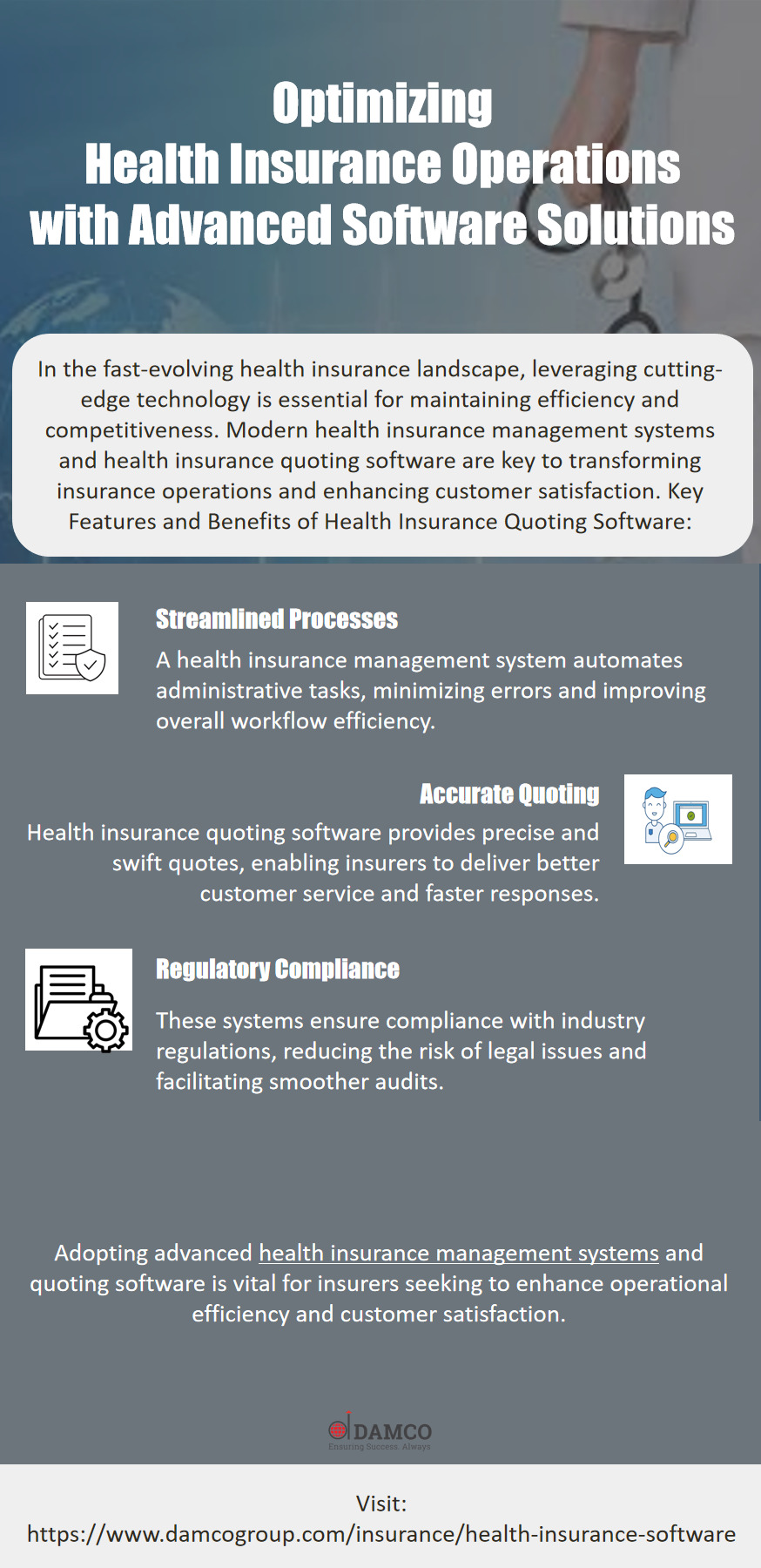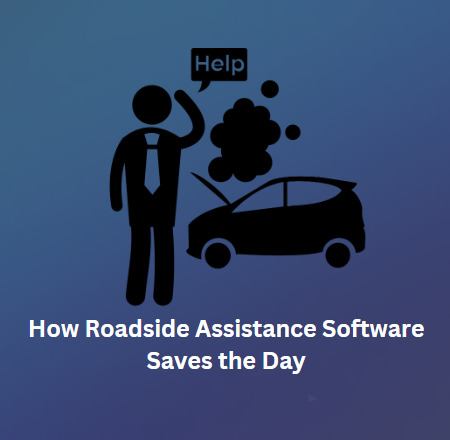#insurance software solution
Text
Speed, Security, and Savings: How ePayments are Reshaping the Insurance Industry

In a time of digital innovation, the insurance industry has seen a significant shift in the way it operates, and two main drivers of this change have been the emergence of insurance management software and electronic payments. The shift from manual to electronic payment systems has simplified procedures and changed the way customers interact with businesses. In this blog, we will examine the significance of electronic payments in the insurance industry, as well as how this technological revolution is changing the business.
Quickness and Effectiveness
The unmatched speed and efficiency that electronic payments offer to financial transactions in contrast to manual processing and laborious paperwork associated with old systems is its greatest advantage. It’s much quicker and safer.
Enhanced Client Experience
In the insurance business, electronic payments are essential to improving the client experience. Thanks to digital wallets, smartphone apps, and web portals, policyholders may now conveniently make payments whenever and wherever they choose.
Increasing Security and Preventing Fraud
Financial transaction security is crucial in the insurance industry due to the sensitive nature of the information shared. Compared to conventional paper-based systems, electronic payment methods offer a higher level of security because they are supported by cutting-edge encryption technologies.
Insurance Companies and Policyholders can Save Money
Adopting electronic payment systems leads to significant cost reductions for both insurance firms and policyholders. Insurance companies can cut down on administrative costs, optimize internal procedures, and lower the risks involved in manually processing paper-based payments. On the other hand, policyholders avoid paying for postage, transportation, and other costs related to using traditional payment methods.
Combining Innovation and Insurtech
The acceptance of electronic payments has been intimately linked to the growth of insurtech, or insurance technology. Insurtech innovations are redefining the insurance landscape and propelling the sector ahead, from secure transactions made possible by blockchain technology to smooth payment experiences provided by mobile apps.
Challenges Insurance Companies Face when Adopting ePayment Technology and Solutions
Data privacy issues
Challenge: Insurance businesses deal with a lot of private client information. When switching to electronic payments, it is essential to guarantee the privacy and confidentiality of this data.
Solution: Adopt strict data protection procedures, such as encryption and safe data storage. Assess privacy on a regular basis to find and fix any issues.
Security Issues
Challenge: Security is a major issue for electronic payments in the insurance sector due to the increase in cyber threats and financial crime.
Solution: To keep up with changing cyberthreats, put strong encryption methods, multi-factor authentication, and constant security measure updates into place.
Customer Education and Acceptance
Challenge: Customers may be accustomed to traditional payment methods and may be hesitant or resistant to adopt electronic payment options.
Solution: Launch thorough customer education campaigns to highlight the advantages of e-payments, such as convenience, speed, and improved security. Provide user-friendly interfaces and customer support to make the transition seamless and address any concerns.
Cogitate x ePay Policy
On the 30th of January, Cogitate, a digital insurance platform announced its partnership with ePay Policy with the goal of offering flexibility and convenience to policyholders. The ePay Policy is one of the best when it comes to the easiest, quickest, and safest way to transfer money for insurance. They are mobile-friendly and can be integrated with your AMS. One of their clients, Hannah Callihan from North Central Insurance, said, “We love that we don’t have to mess with collecting the fee and extra work in our escrow account. I highly recommend using them! Also nice that we don’t have to wait for a check and can bind faster.”
Their excellence, along with Cogitate’s digital and core technology platform for casualty and property insurance, makes them perfect partners. During the event, Tushar Bhole, EVP sales and partnerships at Cogitate, said, “Electronic payment capabilities contribute to the ease of doing business between insurers, their distribution networks, and policyholders. The integration of ePayPolicy with DigitalEdge Policy and DigitalEdge Billing represents a continued commitment to expanding Cogitate’s ecosystem of third-party solutions that offer insurers and Delegated Underwriting Authority Enterprises (DUAEs) enhanced customer service and user experience capabilities."
Conclusion
It is impossible to exaggerate the significance of electronic payments in the insurance industry. Electronic payments are a driving force behind innovation, efficiency, security, and consumer pleasure as the sector navigates the digital age. In addition to helping policyholders and insurers, the use of these technologies sets up the insurance ecosystem for a future in which financial transactions are frictionless, secure, and driven by cutting-edge technology. Insurance firms must embrace electronic payments as a strategic necessity to remain competitive and satisfy the demands of their increasingly tech-savvy clientele.
You can check out Cogitate’s website to learn more about their insurance software solution. Cogitate has an expertise of over a hundred years in the insurance sector. Their products and solutions are the result of these years of experiences. Visit their website TODAY!
Source: https://www.cogitate.us/news/cogitate-partners-with-epaypolicy/
0 notes
Link
Custom Insurance App Development Services | BoTree Technologies
Looking for expert Insurance App Development services? BoTree Technologies provides custom insurance app solutions that are secure, scalable, and easy to use. Contact us to learn more!
Get in touch with us today:https://www.botreetechnologies.com/insurance-app-development
#insurance app#insurance app development#insurance software development#insurance software solution#insurance app development company#insurance app development services#mobile app developer insurance
0 notes
Text
Requirements for the right insurance software solution

The insurance industry is a mammoth one that has been becoming massive in terms of size and complexity. The insurers today face unique challenges. The needs of the customers are expanding briskly as their expectations continue to grow, and retention has come up as a primary mandate. Product offerings have altered rapidly, and the sales channels are also getting redefined with every passing minute. The changes in regulation and risk environments are always present, and these factors are what changes the game. Hence the insurers cannot afford to take it lightly.
The time is challenging for sure.
But how can an organization ensure that it is choosing the right insurance software solution that will meet their needs of not only today but tomorrow too? Firstly, you need to make a fundamental decision where you have to choose between two options. You can develop the technical expertise in-house or team up with a technology provider who has the skills to deliver your requirements. Being a leading innovative insurance technology partner, we at Cogitate Technology Solutions believe that it is the quickest and the most practical way to collaborate with the experts. In this way, you can arrive at a perfect insurance software solution that will help your organization meet its tech needs in the long run.
But, even if you choose to meet your needs in-house or with the help of a technology solutions company like Cogitate, here is a list of must-haves:
Time – The climate around us is competitive, and you have to justify the expenditures on technology by a rapid ROI. The faster your insurance software solution is up and functioning, the quicker you will derive value from it. Whatever solution you choose, it should provide faster time-to-market for your goods and also offer better response time for your buyers and customers.
Agility – In this swiftly developing business ecosystem, you cannot absolutely afford to choose a technological solution that will bind you in an inflexible or stagnant position. Because no matter what, you have to keep up your pace, or you won’t survive. The chosen software must have the capability to cope with rapid change in this continually changing insurance environment. This will be a primary criteria for the success of your venture. It is better if this agility extends to processes and prefers to putting business users in-charge of process changes. Additionally, you will have to rely less on the IT team, and this will result in far quicker response time for your customers.
Seamless 360-degree support – While choosing an insurance software solution, it is also essential to consider another primary factor. What is it? You need to ensure that the software solution integrates and gels well with the current system. Also, it is vital to receive support for all the sales channels and multiple lines of business. There are numerous disparate systems in use, especially some third-party solutions. And the new insurance software solution needs to integrate with these. In the case of multiple segments, the insurance software solution must help integrate your systems with those of your business partners’.
A simple point to point integration that plugs in current systems into a new core will work a smaller framework with two or three systems. But there are multiple enterprises whose architecture has a large scale as compared to the regular ones. In that case, sturdy, stable, and scalable integration planning is of high priority.
Proven track record – If you choose to collaborate with a tech expert, they should be the finest and the best. Your tech expert literally needs to be an ‘expert.’ You absolutely do not have the time to ‘learn and grow together’ because even little delays can cause losses in your business. The competitors will get there first, and the industry will keep on evolving while you play ‘catch-up.’ Hence, before you decide on a partner, make sure that they have delivered measurable results consistently in the insurance domain.
Cogitate has always been on the front of the battleground of this rapidly expanding business of providing Claims Management Software to insurers. We incorporate 50 years of insurance knowledge remarkable technology talent to help the insurers stay ambitious and remain significant as they set up their businesses for the future. We arrange various portions of the insurance distribution value chain and cover end-to-end digital servicing, advertising, and marketing for your business. Please visit www.cogitate.us to know more about our full-slate, cost-effective products and technologies that are extremely easy to use.
0 notes
Text
Unlocking Efficiency and Innovation: The Role of Robotic Process Automation (RPA)

In today's fast-paced and competitive business environment, organizations are constantly seeking ways to improve efficiency, reduce costs, and increase productivity. Robotic Process Automation (RPA) has emerged as a powerful tool that can help businesses achieve these objectives.
What is Robotic Process Automation (RPA)?
Robotic Process Automation (RPA) is a technology that allows businesses to automate repetitive, rule-based tasks. It uses software robots, also known as "bots," to mimic human actions and interact with digital systems. These bots can log into applications, navigate through screens, input data, and complete tasks just like humans would.
The Role of RPA in Business:
RPA can be used to automate a wide range of tasks across various industries and departments. Here are some examples:
Finance and Accounting: Automating tasks such as accounts payable and receivable, invoice processing, and financial reporting.
Customer Service: Automating tasks such as answering FAQs, resolving customer inquiries, and processing orders.
Human Resources: Automating tasks such as onboarding new employees, processing payroll, and managing benefits.
IT: Automating tasks such as provisioning accounts, managing user access, and deploying software updates.
Impact of RPA on Businesses:
Implementing RPA can offer numerous benefits to businesses, including:
Increased efficiency and productivity: RPA can automate time-consuming and tedious tasks, freeing up employees to focus on more strategic and value-added activities.
Reduced costs: RPA can help businesses save money on labor costs, as well as reduce errors and compliance risks.
Improved accuracy and compliance: RPA bots are programmed to follow specific rules and procedures, which can help to improve accuracy and compliance with regulations.
Enhanced process visibility and control: RPA provides businesses with a clear view of their processes, which can help them identify and address bottlenecks.
Improved customer satisfaction: RPA can help businesses improve customer satisfaction by automating tasks such as order processing and customer service interactions.
RPA Services:
Implementing RPA successfully requires a partner with expertise in the technology and a deep understanding of business processes. A comprehensive RPA solution should include the following services:
Document AS-IS Process: This involves mapping out the existing process to identify areas for automation.
Design & Development of Bots, workflows, and forms for process automation: This includes designing and developing the software robots that will automate the tasks.
Bot license (We will use the appropriate underlying technology): This provides access to the software robots and the underlying technology platform.
Infrastructure: This includes setting up the necessary infrastructure to support the Robotic Process Automation (RPA) solution.
Production Deployment of the Bots: This involves deploying the bots to production and monitoring their performance.
RPA support: This includes ongoing support for the RPA solution, such as troubleshooting and maintenance.
Test & Deploy bots to production: This involves testing the bots in a production environment and making any necessary adjustments before they are deployed to full production.
Configuration data changes: This involves making changes to the configuration data of the bots as needed.
Password updates: This involves updating the passwords of the bots as needed.
Errors in executing the Bots: This involves resolving errors that occur during the execution of the bots.
Determining the “root cause” of a recurring issue or incident & recommendations: This involves identifying the root cause of a recurring issue or incident and recommending solutions to prevent it from happening again.
Infrastructure/application related issues: This involves resolving issues with the infrastructure or applications that the bots are interacting with.
Conclusion:
RPA is a powerful technology that can have a significant impact on businesses of all sizes. By automating repetitive tasks, RPA can help businesses improve efficiency, reduce costs, and increase productivity. However, it is important to choose a reputable Robotic Process Automation (RPA) companies with the expertise and experience to help you implement a successful RPA solution.
Ready to embrace the power of RPA?
Contact us today to learn more about how RPA can help your business achieve its goals.
#robotic process automation#robotic process automation rpa#rpa automation#robotic process automation software#rpa software#robotic process automation companies#robotic process automation technology#robotic process automation in healthcare#robotic process automation in banking#rpa solution#robotic process automation for finance#process automation solution#robotic process automation services#robotic process automation for insurance#rpa system#what is rpa automation#robotic process automation solution#robotic process automation benefits#robotic process automation consulting#robotic process automation consultant#rpa service provider#rpa consulting services
2 notes
·
View notes
Text
Automated Insurance Underwriting Software: Restructuring the Insurance Sector

While digital transformation has occurred in a number of industries in recent years, the insurance industry remains an outlier. The insurance industry is lagging behind many others as a result of its reliance on legacy systems that are difficult to replace. Despite this, the insurance industry has made some progress toward digital transformation in its primary underwriting process. The underwriting process has improved as the industry has embraced new technologies.
Let's take a look at how automation is changing the underwriting process and how the insurance industry might look in the future.
What is Insurance Underwriting?
In the insurance industry, underwriting is the process of assessing the risk of providing coverage to a potential client. After all, all insurance companies are for-profit enterprises, and underwriting assists them in determining whether or not providing coverage to a specific client is profitable. Insurance companies must consider the amount of risk they are taking when providing coverage to a client. They must also be aware of the possibility of something going wrong and them having to pay the claim. Insurance companies calculate and charge insurance premiums based on the amount of risk involved.
Traditional Underwriting
Underwriting has always been one of the insurance industry's most under served areas in terms of technology; underwriters have always had to manually wrangle data from disparate sources into spreadsheets in order to assess the risk that different clients and situations present and thus make appropriate coverage and pricing decisions. Because of the complexity of the various data sets that underwriters must access and integrate, traditional underwriting has always been inefficient. Historically, the insurance industry has been conservative and slow to adopt new technologies. Several factors have contributed to this slow adoption of technology, including the prevalence of legacy systems, paper-based processes, risk aversion, and so on. Modern insurance companies, on the other hand, have begun to recognize the critical role that AI can play in their operations.
It's Now the Era of Automated Underwriting
Automated insurance underwriting software refers to the process by which insurance companies use AI-driven expert systems to facilitate more efficient underwriting. These widely used expert systems, which include thousands of hard-coded underwriting criteria, evaluate the risk of providing coverage to different individuals. As technology advances, these expert systems become more sophisticated, as they use machine learning algorithms to learn new patterns of risk information. Furthermore, insurance companies are using big data to create systems that can deal with novel risk assessment problems. We may see a complete shift away from humans and toward machines in insurance underwriting in the coming years. In the near future, human intervention in the underwriting process may become obsolete.
Conclusion
Manual underwriting is becoming obsolete as businesses strive to improve the customer experience. By assisting the insurance underwriting software , insurance companies can improve risk assessment and provide a more dependable service to insurance seekers.
#insurance underwriting#insurance software solutions#custom software development#insurance solutions
7 notes
·
View notes
Text
KYC Provider Canada
KYC is a mandatory process that financial institutions and other businesses follow to authenticate the identities of their customers. KYC Providers help and provide KYC API to verify users' and business identities. KYC Providers in the Canada also use various methods to verify identities, like id, document, and address verification.

#KYC Canada#KYC Providers#KYC API#KYC Services provider#KYC Solutions Provider#KYC Software#kyc verification#KYC verification Solutions#KYC Platform#KYC Solution#fiance#crypto#blockchain#bitcoin#insurance#finance#fintech#healthcare#business
3 notes
·
View notes
Text
KYC API Provider in UK
Stay secure and protect your business from financial fraud using the KYC API. KYC helps verify business identities and facilitate fast customer onboarding for almost every UK industry's business. We are one of the most trusted KYC API providers in the UK and instantly deliver the most matching results for banking, finance, cryptocurrency, insurance, fintech, healthcare, and online gaming sectors.

#kyc verification#kyc#kyc api#KYC Solution Provider UK#KYC API Providers#KYC Companies#KYC Software#banking#finance#healthcare#insurance#cryptocurrency#gaming#fintech#UK KYC
3 notes
·
View notes
Text
How to Choose the Right Insurance Software Solutions for Your Business
Insurance software solutions are an essential tool for businesses in the insurance industry. The right software can streamline policy management, improve accuracy in data entry and claims processing, and increase customer satisfaction. When looking for an insurance software solution, there are several important features to consider, including ease of use, cost-effectiveness, and security and privacy features.

Automated document processing and storage, automated policy issuance/renewal, and document assembly capabilities are common features that can enhance the efficiency of insurance software solutions. Before reaching out to insurance software solution providers, it is important to identify your needs and desired features and research providers that match those requirements.
Choosing the right insurance software solutions is crucial for any business. Check out our recent blog post for more tips: https://www.rdglobalinc.com/how-to-choose-the-right-insurance-software-solutions-for-your-business/
RD Global is a custom insurance software development company that can help businesses create a comprehensive suite of features for their insurance software solution. With over two decades of experience, we offer policy management, underwriting, risk assessment, SaaS product development, claims registration and processing, and billing, among other valuable benefits.
Contact us today to schedule a complimentary consultation and find out how our team of experts can help you right Insurance software solution for business growth.
#insurance software solutions#rdglobalinc#custom insurance software development#insurance software development company
2 notes
·
View notes
Text

Impact of AI on the Insurance Sector
Check out the link and learn about the new blog that has been published Impact of AI on the Insurance Sector
@pinesucceed
#artificial intelligence#inteligência artificial#insurance#insurance software#industry#banking#bankingindustry#banking software#banking app#software solutions#app developers#mobile app developer company#app developing company#app development#mobile app development#mobile app developers#softwaredevelopment
4 notes
·
View notes
Text

Upgrade your health insurance processes with our advanced software solutions. Reach out today to explore our innovative products. Visit:
#insurance technology#insurance software#insurance solutions#health insurance software for agents#health insurance
0 notes
Text
Using Automated Data Prefills to Unlock the Future of Digital Insurance

The evolution of technology has led to the evolution of many sectors, including the insurance market. Adopting cutting-edge technologies became necessary to keep ahead in the constantly changing digital insurance market. Automation of data prefills is one such invention that's causing a stir; it's revolutionized procedure streamlining and increased overall efficiency. In this blog, we will talk about the importance of automated data prefills, their benefits, and the technological factors that make them a major force in the insurance sector.
Data Prefills: An Overview and Importance
In the ever-changing world of digital operations, data prefills have become essential for both accuracy and efficiency. These prefills simplify processes and drastically lower the possibility of errors related to manual data entry by automating the populating of forms with current data. As a result, there is a noticeable increase in overall efficiency, saving users' time and helping organizations gain from accelerated procedures. Data prefills provide accurate information that guarantees a seamless and trustworthy user experience, extending beyond speed gains and benefiting various industries like marketing and insurance.
Benefits of Data Prefill Automation
1. Enhanced Productivity
Automation saves valuable time for both customers and insurance providers by doing away with the necessity for repetitive manual data entry. Applications, claims, and other important tasks can be completed more quickly with faster processes, which increases the operational efficiency.
2. Improved Precision
Automated data prefills in digital insurance software greatlylower the possibility of mistakes brought on by human entry, guaranteeing the accuracy of the data.
3. Accelerated Underwriting Process
By streamlining the underwriting procedure, automation enables more rapid and precise risk evaluations. Streamlining data enables insurance approval procedures to be completed more quickly, satisfying client demands for timely assistance.
4. Improved Client Relationship
By minimizing complexity for users, automated data prefills produce a smooth and intuitive application experience. A more seamless onboarding procedure boosts client happiness, which in turn builds loyalty and confidence.
5. Cost Savings
Automation lowers the demand for heavy manual labor, which saves insurance companies money. Reductions in error also lead to cost savings.
6. Data-Informed Decision Making
Automation makes it possible to use large, precise datasets, giving insurance companies important information they can use to make decisions. It also leads to precise risk assessment using accurate data, which results in better pricing plans and risk forecasts.
Case Study
Cogitate Technology Solutions, a digital development company for insurance companies, announced its pre-integration of Confianza’s property and auto data sets with the DigitalEdge Insurance Platform on December 5th to enhance data validation at submission, strengthen risk selection, and support renewals with real-time data.
Data prefills automate the submission process, saving human input and providing instantaneous feedback on risk appetite for numerous business lines. This results in a beautiful and efficient experience for agents and underwriters. Insurance underwriting platforms helped in intelligent, automated data prefill since it identifies errors and omissions, prioritizing submissions that are most likely to bind, and eventually lowering leakage.
Samir Salem, EVP of customer success for Cogitate, said, ‘The expansion of our ecosystem of trusted third-party data providers is very intentional. With these highly vetted partners, we’re infusing data into the submission and underwriting process to reduce premium leakage, improve risk and customer selection, and speed the underwriting process for all stakeholders across the policy lifecycle. Confianza shares Cogitate’s passion for data science and predictive modeling, and we see them as an exciting fit.’
Conclusion
The benefits of automated data prefills in insurance software solutions in the ever-changing world of digital insurance are abundant and convincing. The impact is revolutionary, ranging from increased accuracy and efficiency to better client experiences. Adopting AI and machine learning into data prefills will be essential for maintaining competitiveness as technology develops. Automation will undoubtedly revolutionize the way insurance processes are carried out and experienced, significantly impacting the future of digital insurance.
0 notes
Text

Effortless Integration, Superior Results: Agiliux's Software Solution for Insurance Companies
Discover Agiliux's comprehensive software solution for insurance companies at https://www.agiliux.com/solutions/insurance-companies. Our innovative platform revolutionizes insurance operations, maximizing efficiency and driving growth. With tailored features and seamless integration, Agiliux empowers insurers to streamline processes, enhance performance, and stay ahead of the curve. Experience effortless management and superior results with Agiliux's leading-edge software solution.
#software for insurance companies#insurance company software solutions#insurance company management software#software solution for insurance companies
0 notes
Text
3 Must-Haves in Claims Management Software

Insurance buyers need the security of policies they can bank upon more than ever in these distressed times. Yet, research by the Mactavish Group, an insurance governance firm, shows that as many as 45% of major commercial claims are disputed, an outcome that adversely affects buyers, businesses as well as the insurance industry. Designing efficacious, unambiguous insurance products is one way to run complex claims efficiently. The other is to manage claims effectively.
The modern insurer requires a battery of modern technology which is capable of efficiently streamlining insurance claims processes, thereby cutting down on time, costs, and inconvenience. Claims management solutions that have the ability to quickly root out fraud and minimize the risk of losses or litigations provide insurance teams the leeway to focus instead on areas which require their expertise the most. There are three cornerstones necessary for improving claims operations: demand management, fraud network analytics and a responsive and easy-to-use customer access.
Support for Efficient Claims Handling
Efficient claims management solutions for insurance carriers are necessary for crafting goodwill between client and company, and this translates to speed, convenience, and consistency. The use of technology is growing increasingly central for this process, with machine learning (ML) and artificial intelligence (AI) quickly becoming imperatives for improving efficiencies. Text mining and ML can iron out the creases in the earliest parts of the process and also continually keep discussions with attorneys organized and swiftly available.
Smooth, hassle-free processes supported by an effective insurance software solution are mutually beneficial for all parties involved. The likelihood of demands transitioning into litigations and bad faith decrease and make the next steps of any such process easier to handle.
Early Identification of Claims Fraud
Keeping up with claims frauds requires the use of advanced technology and an intelligent claims management solution to identify fraud at the earliest instance and prevent it from consuming too much of the insurance provider’s time.
As with claims handling, innovative and adaptive technology are central to the progress in the facet of the process. ML and AI have been game changers in tracking behavioral trends evident in previous fraudulent cases and alert the carrier to potential red flags.
Claims fraud needs an insurance software solution that can keep pace with it. Technology which not only makes the process quicker and more efficient but also more foolproof is an essential ally for insurers.
Customer-centricity
The customer continues to be at the epicenter of the entire process. Their goodwill requires processes that are geared towards improving customer experience. Claims management systems that allow easy ‘anytime, anywhere’ loss reporting, convenient claim tracking and the ability to handle multiple lines of business can help elevate customer experience.
The generation of goodwill through customer satisfaction and loyalty stands firmly at the top of an insurance carrier’s to-do list. As important as rooting out fraud is, satisfying genuine insurance claimants are the top priority to ensure high customer retention rates and also the chance to network and extend the outreach of a firm. The right insurance software solution can aid all parties by helping the customer stay on top of their own claims and allowing efficient, tightly-bound handling of the situation.
How Cogitate can Help
‘Cogitate Intelligent Claims for Insurance’ suite includes three innovative, technology-led insurance software solutions for improving claims operations. These three solutions integrate easily with the existing claims management systems of the insurance carrier. Cogitate Demand Management makes use of ML and AI to make attorney demand letter processing as seamless as possible. Cogitate Claims Fraud Network Analysis – the CFNA – uses neural networks and advanced, futuristic technology to identify and act upon potential frauds with precision available only through use of such technology. The First Notice of Loss – FNOL – is a digital claims reporting tool which can be accessed through web portals or mobile apps, making the experience for customers much better. Talk to us today to learn how Cogitate’s solutions can be integrated with your systems to modernize claims processing.
0 notes
Text
#commercial insurance#insurance solutions#reinsurance software#insurance software#underwritingsoftware#insurance news#insurtech#insurance coverage#reinsurance
0 notes
Text
How Roadside Assistance Software Saves the Day
A flat tire on a deserted highway. A dead battery at the most inconvenient time. Running out of gas in unfamiliar territory. These are just a few scenarios that can turn a pleasant drive into a major headache. Thankfully, Emergency Roadside Assistance Services Software (ERAS) exist to provide a helping hand in such situations.

But what if the system behind ERAS could be even more efficient, streamlined, and beneficial for both service providers and customers? That's where Roadside Assistance Software comes in.
This blog will delve into the world of Roadside Assistance Software, exploring how it revolutionizes the way ERAS operates, saving the day for both stranded motorists and service providers.
The Hero Behind the Scenes: How Roadside Assistance Software Functions
Roadside Assistance Software acts as the central nervous system for ERAS providers. It's a comprehensive software solution that manages every aspect of the service delivery process, from initial customer contact to service completion and invoicing. Here's a breakdown of its core functionalities:
Customer Interaction: The software provides a user-friendly interface for customers to request assistance. This can be through a mobile app, a dedicated website, or even a toll-free number. Customers can easily pinpoint their location using GPS technology, allowing for faster dispatch.
Dispatch Management: Upon receiving a request, the software efficiently allocates the closest available service provider based on the customer's location and the nature of the problem. This ensures a quicker response time, minimizing the duration a customer is stranded.
Real-Time Tracking: Both the customer and the service provider can track the service vehicle's arrival in real-time through an integrated GPS system. This transparency keeps everyone informed and reduces anxiety for the customer.
Communication Hub: The software facilitates seamless communication between the customer, the service provider, and the ERAS company. Customers can update their situation, service providers can relay progress, and the company can maintain an overall view of operations.
Payment Processing: Secure payment integration allows for a hassle-free transaction process. Customers can pay for services directly through the app or website, eliminating the need for cash on hand.
Data Analytics: Roadside Assistance Software collects valuable data on service requests, response times, and service types. This data can be analyzed to identify trends, optimize service allocation, and improve overall efficiency.
Benefits of Roadside Assistance Software for Service Providers
Roadside assistance solutions providers often juggle a large network of service vehicles and technicians. Here's how software empowers them to manage their operations effectively:
Increased Efficiency: The software automates manual tasks like dispatching and tracking service vehicles, freeing up valuable time for providers to focus on customer service and growing their business.
Optimized Resource Allocation: By matching customer needs with the most suitable service provider, the software ensures efficient utilization of resources and reduces operational costs.
Improved Customer Satisfaction: Faster response times, real-time tracking, and clear communication lead to a more positive customer experience, boosting customer loyalty.
Data-Driven Decision Making: The software provides valuable data on service requests and customer behavior. This data can be used to identify areas for improvement, expand service offerings, and make strategic business decisions.
Benefits of Roadside Assistance Software for ERAS Companies
For companies offering ERAS, the software plays a crucial role in streamlining operations and maximizing customer satisfaction. Here's how:
Enhanced Customer Service: The software facilitates a smooth and efficient customer experience, from requesting assistance to receiving service completion updates. This reflects positively on the ERAS company's brand image.
Improved Operational Efficiency: Automated dispatching, real-time tracking, and efficient resource allocation lead to faster response times and reduced operational costs for the ERAS company.
Reduced Administrative Burden: The software eliminates the need for manual data entry and record-keeping, freeing up valuable staff time for other tasks.
Scalability and Growth: Roadside Assistance Software is easily scalable, allowing the ERAS company to expand its service offerings and customer base without significant infrastructure upgrades.
The Future of Roadside Assistance with Software Solutions
The integration of advanced technologies like artificial intelligence (AI) and machine learning (ML) offers exciting possibilities for the future of Roadside Assistance Software. Here are some potential advancements:
Predictive Maintenance: AI algorithms can analyze vehicle data to predict potential breakdowns, allowing for preventative maintenance and avoiding roadside emergencies altogether.
Chatbots and Virtual Assistants: AI-powered chatbots can provide initial customer support, answer frequently asked questions, and collect vital information for faster dispatch.
Dynamic Pricing Models: ML can analyze historical data to create dynamic pricing models that consider factors like location, time of day, and service type.
These advancements hold the promise of creating a more robust, efficient, and personalized roadside assistance experience for all stakeholders.
Roadside Assistance Software is a game-changer for both Emergency Roadside Assistance service providers and the companies that offer these services. By automating tasks, optimizing resource allocation, and facilitating seamless communication, the software streamlines operations, reduces costs, and enhances customer satisfaction.
Looking ahead, the integration of innovative technologies like AI and ML promises to further revolutionize the roadside assistance landscape. The future holds the potential for a more proactive, personalized, and efficient service experience for everyone on the road.
Ready to transform your Emergency Roadside Assistance Services?
Indicosmic, the best software solutions company in India, a trailblazing technology provider since 2016, pioneers innovation in the insurance and automotive sectors. We offer advanced roadside assistance solutions, providing seamless support to customers and revenue generation for your business.
Contact Indicosmic today and discover how our cutting-edge software solutions can empower your ERAS operations and unlock a world of possibilities.
0 notes
Text
Unleash Efficiency with MedinyX Insurance Claims Management Software
Is your claims process stuck in the slow lane? Are you bogged down by paperwork, manual tasks, and frustrated policyholders? MedinyX Software Solutions has the answer: our revolutionary Insurance Claims Management Software.

Stop Drowning in Data, Start Swimming with Confidence
Our software automates time-consuming tasks, freeing you to focus on what matters most:
Effortless FNOL Intake: Expedite first notice of loss submissions and flag potential fraud for a smoother claims journey.
Automated Workflows: Ensure consistent claim handling with pre-defined workflows and business rules.
Seamless Data Management: Effortlessly capture and track all claim-related data in a centralized location.
Reduce Costs, Enhance Customer Satisfaction
MedinyX empowers you to achieve:
Faster Claim Resolutions: Reduce processing times and expedite claim payouts, keeping policyholders happy.
Improved Operational Efficiency: Eliminate manual tasks and streamline workflows to save time and resources.
Reduced Errors and Fraud: Minimize human error and identify fraudulent activity for improved risk management.
Empower Your Team, Delight Your Customers
MedinyX provides the tools your team needs to excel:
Customer Self-Service Portal: Offer policyholders a user-friendly platform to submit claims and track progress 24/7.
Real-Time Claim Updates: Keep customers informed throughout the process, fostering trust and transparency.
Smart Case Management: Assign claims to the most qualified adjuster based on expertise for faster resolutions.
Unmatched Features for Superior Claims Management
Integrated Policy Information Retrieval: Automatically retrieve policy details and prevent duplicate claims for efficient processing.
Data-Driven Insights and Reporting: Gain valuable insights through customizable reports and KPIs to optimize claims handling.
Flexible Claim Management: Effectively manage all claim types, including complex claims with integrated legal matter processing.
Detailed Claim Assessment Tools: Equip adjusters with a comprehensive dashboard for thorough claim evaluation.
MedinyX M360*: Your One-Stop Shop for Insurance Success
Our Insurance Claims Management Software is just one piece of the puzzle. MedinyX M360* offers a comprehensive suite of solutions designed to transform your entire insurance operation, including:
Point of Insurance Sale
Policy Administration and Servicing
Insurance Underwriting
Policy Wording and Clause Management
Don't Let Your Competitors Leave You in the Dust
Embrace digital transformation with MedinyX. Our Insurance Claims Management Software empowers you to achieve:
Reduced Costs
Improved Efficiency
Enhanced Customer Satisfaction
Contact MedinyX Software Solutions today and discover how our software can revolutionize your claims process!
0 notes